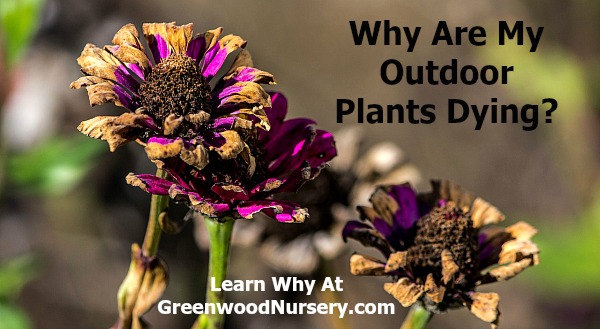Free gardening gloves when you spend $75.00 or more!

After about 4 weeks into the fall gardening season what’s done is done, more or less. Once the garden is closed up in mid to late fall, it’s time to provide some introspection about what worked and what didn’t. Keeping quick notes during the summer is helpful in jostling memory, especially if something went wrong during the earliest part of the gardening season. By keeping these notes, you may learn patterns about weather and how your various plants handle it.
When you see all the challenges your plants confront, it’s amazing they even survive!
While certain outdoor plants appear unchanged or you have kept them in good shape, their environment may have changed. Plants initially may have been properly spaced when you planted them five years ago, but have since grown and are now fighting for space and food. Dividing plants will give them room to breathe and a chance for you to look generous by giving away some of your garden!
Space is not the only subtle change. Has your source of light changed? For example, you planted a full shade hosta as a border in one of your gardens.
That location had received a ton of shade from a large oak tree fifty feet away. However, two years ago that tree was removed. Where there once was shade, now there is none. Consequently, a full shade hosta now must absorb a full day of direct summer sun, as does the soil.
Anyone with a vegetable garden knows from year to year the circumstances can change drastically. One year this is no rain and the following year, it seems like it rains daily. Plants that thrive on full sun and modest rainfall are victimized when it’s a rainy summer. Water is not limited from the sky. You may be over (or under) watering your plants. Do a little research on your plants because you will find that many plants don’t need as much water as you think. What goes hand-in-hand with watering is soil type. If a perennial has not survived a season, you might wish to consider your soil’s composition. If water is just sitting in a clay-dense soil, it may be killing your plants and you don’t even know it.
Most plants that are purchased for a garden usually fall within hardiness guidelines. However if you unknowingly planted them in microclimates, they may have to endure more heat/cold than the plant can withstand. Microclimates can occur near garages or the side or bottom of hills.
Sometimes it’s the weather and sometimes it’s the plants that create the problem. Certain bulbs and perennials might need a hand to last through the winter.
If you constantly have to replace bulbs that are the source of beautiful summer flowers, you may want to look at how you prepare them for the colder months.
Some bulbs might need to be stored over the winter. Others would benefit from a layer of mulch in the fall to protect from the winter ahead.
Another pesky problem could be insects and just about every plant has a nemesis. Researching your plants’ nemeses will give you something to strategy to combat it should you examine similar results during the growing season.
If you have a vegetable garden and grow cabbage, cabbage maggots also work their way into the cabbage roots and provide pathways for disease to kill your cabbage.
Many squash growers find their plants vigorous one day, and in what seems like the next, the large elephant ear leafs are yellowing. By the third day everything is dead. Only then do you notice where the stem rises from the ground there are gray, almond sized insects, squash bugs, having an all-you-can-eat buffet. A careful eye might have spotted the infestation earlier, and that is the price of experience. One way to rid squash bug is doing it the old fashioned way by stomping them to death.
Besides hand-to-hand combat, there are also sprays, organic and otherwise, that can aid you in growing healthy plants. While no one likes when one of their plants does not succeed, it is a chance to understand what is occurring in your yard and appreciate the dynamic life that surrounds you.
- cheryl's blog
- Log in or register to post comments







